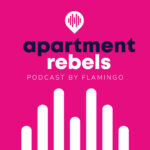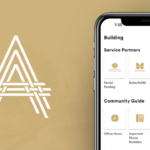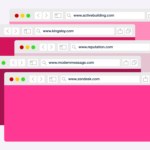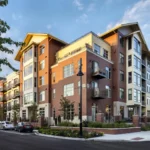Ba da ba ba ba… I’m lovin it. If you can’t recognize that jingle…well, I can only assume you’ve lived mostly under a rock…and also don’t know Pharrell Williams and Justin Timberlake. McDonald’s is one of the world’s most recognizable brands and largest restaurant chains – serving 70 million people…every…single…day. In the article below, I go into detail on How McDonald’s apartments would be run and the 7 key points they’d focus on to improve NOI drastically.
McDonald’s could literally feed the UK population of 67 million everyday. It could even feed any of the other 215 out of 235 countries that have less than 70 million people.
People love (and love to hate) McDonald’s because it’s cheap, consistent, and stands out. And this is exactly how McDonald’s would run your apartment building. And this is also why McDonald’s would dominate the property management industry – cheapness, standardization, ruthless efficiency, and loud branding.
While comps charge $2000 for a Class Luxury Apartment, McDonald’s would find a way to charge $1800. And guess what? They’d still come out with higher NOI.
Haha you might say… how could a fast food restaurant run my apartment? Well….McDonald’s is technically a real estate company first, and a restaurant second.
Take a Peek at McDonald’s 2020 balance sheet and one number stares you dead in the face – $42 Billion. That is the value of all of McDonald’s property and equipment.
There are only 6 companies in the world that own more real estate than McDonalds – all of whom are outside the USA including China’s Evergrande that owns $352 Billion. Yea, almost all the others larger than McDonald’s are also in China. In fact, the only North American company that comes close to McDonald’s in real estate asset ownership is Marriott International at $28 Billion.
To give further perspective, MAA (Mid-America Apartment Communities), ranked #1 on the NMHC 50 Largest Apartment Owners List ‘only’ owns $11 Billion in real estate assets.
Ba da ba ba ba…so there you have it – McDonald’s is the 7th largest owner of Real Estate in the whole wide world already. With 38,000 restaurants around the world, 93% franchised and 7% corporate managed, McDonalds is very unique among it’s fast food peers in that McDonald’s makes most of its revenue from rent.
In 2020, $6.8 Billion of the $10.7 Billion revenue it earned from franchised restaurants came from rent McDonald’s charged it’s franchisees. 64% of McDonald’s revenue was rent, 35% was from royalties, and 1% was from initiation fees.
McDonald’s business model is simple and brilliant:
1) Find the best location for a restaurant and buy it – ideally during a recession when it’s cheaper
2) Painstakingly select highly competent franchisees and train them rigorously in the McDonald’s way
3) Get rent and royalties from those franchisees
4) Profit
McDonald’s is already so good at real estate that many members of it’s Board of Directors have recommended that McDonald’s spin off it’s U.S. holdings into a Real Estate Investment Trust (REIT). They wanted it to become the real estate company it already is… but former CEO Steve Easterbrook was was like “Nah son… We good.”
And one last random fact before we get to exactly how and why McDonald’s would dominate the apartment industry…McDonald’s was the largest private operator of playgrounds in the USA…so ya, they already know how to manage amenities.
So now for the good stuff, here is exactly how McDonald’s would dominate the apartment industry using Porter’s 5 Forces.
Using Porter’s 5 Forces, McDonald’s primary generic strategy would focus on cost leadership. Secondary would be standing out from competitors, and tertiary would be vertical integration.
Basically, McDonald’s strategy would be to provide the highest quality apartments at the most competitive price. They’d focus using technology, automation, and good old fashioned process efficiency.
While comps charge you $2000 per month in rent, McDonald’s would charge you $1800. And they’d still have higher NOI than competitors.
Haters will say this is Impossible. After all, most costs in real estate like land are fixed. But McDonalds would counter that cost with utilities, staffing, and some materials that can be variable. Let’s chat through it by breaking down exactly how McDonald’s Apartments would be so cheap:

1. McDonald’s would reduce operating costs with ruthless efficiency and vertical integration
When you have to make 70 million meals per day, you realize just how important small gains in process and efficiency can be.
Efficiency is built into McDonald’s DNA right from the start – As John F Love noted in his book McDonald’s: Behind the Arches, the two brothers, Richard and Maurice McDonald, “worked with a local craftsman to invent a new kind of spatula, a new dispenser that squirted the same amount of ketchup and mustard every time, and a rotating platform to speed up the process of assembling of burger, bun and condiments”
This drive for efficiency and standardization has continued to the present day, where McDonald’s is constantly improving its operations from minor changes like packaging used to major changes like restaurant layout.
Some ways McDonald’s would improve efficiency in their apartment operations would be adding more self-service opportunities. They’d focus on automating manual processes, and having preferred pricing with supplies that sites can use. Ask any site team member. They will tell you about the hours upon hours they waste compiling reports that no one really reads or the number of systems that they have to log into each day.
Secondly, McDonald’s would use vertical integration to keep costs down and profits up. Vertical integration is when a company owns many more parts of the supply chain.
In it’s food business, McDonald contracts directly with producers to grow livestock and vegetables, process everything and even owns many of the facilities that make the standardized mixtures of ingredients used during assembly.

2. McDonald’s would train Apartment Site Teams Like Marines
McDonald’s sells 75 hamburgers every second and feeds about 70 million people per day.
This is all done at 40,000 stores around the world employing about 1.7 million people. Without adequate training, it’s easy to see how things could break down quickly with rogue franchisees doing their own thing.
But this is not the case. Walk into any McDonald’s, no matter the country, and the process to produce a burger is exactly the same.
This is all thanks to a rigorous franchisee selection and training process – all done at Hamburger University.
Yup, that is right. McDonald’s has a full-fledged university. Their training facilities with 8 campuses around the world including Chicago (HQ), Tokyo, London, Sydney, Munich, São Paulo, Shanghai, and Moscow. More than 5,000 aspiring franchise managers graduate Hamburger university every year where they learn everything about restaurant management.
McDonald’s would bring this same rigorous training and development approach to training it’s site teams to drive consistency in apartment operations for all it’s sites.
Apartment operations can be extremely complex with regulations varying by state. Many apartment managers rely on 3rd parties like the NAA to become Certified Apartment Managers (CAM).
McDonald’s would for sure keep everything in-house to ensure everyone from leasing agents to regionals are well versed in the McDonald’s way.
This would drastically improve operations and ensure consistency across all properties. Property managers could move from one McDonald’s apartment to another, and be up and running in just a few minutes.

3. McDonald’s would use automation and self-service to reduce the need for concierge and leasing teams
If you’ve been to a McDonald’s recently, you would have noticed that many McDonald’s locations have self-service kiosks that allow customers to place their orders and simply pick up their food when ready.
From the almost 10,000 kiosks deployed domestically already, McDonald’s data has already shown a 6% increase in sales after introducing these self-service kiosks.
When I talk with apartment site teams, it’s always a shock to me the number of tedious and repetitive tasks they do daily that could be easily automated with technology or made a self-service process.
If McDonald’s got into the apartment industry, they would salivate at the opportunity to reduce cost and dramatically increase NOI in just a few weeks by automating so many tasks that are currently and unnecessarily done manually at many apartments.
Here are just a few things that McDonald’s would automate in the blink of an eye:
Tours: McDonald’s would completely do away with guided tours and only provide the option for virtual or self-guided tours. With so many companies like Realync providing options to quickly offer self-guided tours, Mcdonald’s would remove this task immediately from the leasing team’s plate. Most apartment offices are open during the workday – when most people are…working. Virtual or self-guided tours would allow prospects to see an apartment whenever they wanted.
Move-In Process: many site teams still do leasing manually where they are chasing residents to submit proof of renter’s insurance, set-up utilities, and the other items needed as part of move-in . McDonalds would quickly automate this with a self-service checklist.
Renter’s Insurance Verification: most apartments shockingly still rely on residents emailing the site team a PDF as proof of renter’s insurance. Not only is this extremely manual, it’s also easy for a resident to create a fake PDF or even cancel their policy once submitted to the site team. McDonald’s would use a renter’s insurance integration that allows for real time renter’s insurance status.
Searchable Digital Resident Guides with Chatbots: Site teams spend an inordinate amount of time responding to the same questions over and over and over and over again. McDonald’s would implement a searchable digital resident guide with chatbot functionality that helps residents find answers themselves.
Lock-outs and other access: Every door at McDonald’s Apartments would be smart access enabled so that maintenance teams are not being woken up at 2am to let a resident in because they lost their keys.
Reports: Talk to any site team member and they will tell you one of the worst parts of being in property management is the number of reports you have to compile – weekly, monthly, leasing, target marketing, delinquency etc. And many times, you are compiling reports from…other reports …wait what? And worst…you probably know that no one is actually reading those reports. McDonald’s would figure out what reports are actually important and completely automate the compilation of those reports.
Resident Engagement: most communities rely solely on resident events done by the onsite team. McDonalds would provide residents with their own resident app that allows them to connect with neighbors digitally. They’d also give the option to self-organize their own events. Wether it’s running groups, weekly wine tasting club, or a monthly book club.
And the rest: Amenity Reservations, Freight Elevator Reservations, Late Rent Reminders, Unit Inspections, Renewal, Move-Out, Resident Surveys, Parking, Seasonal Reminders, Review Requests, Package Handling etc. McDonald’s would automate all of these and 100s more to reduce the number of site teams needed. Or have site teams work on more productive work like proactive resident experience, resident retention, and resident engagement.

4. McDonald’s would drastically increase revenue per resident by bundling rent with McFurniture Rental, McWIFI, McCable, McHouseCleaning, McFitness, McStorage etc
Do you want fries with that? So ingrained is bundling at McDonald’s that that famous phrase is even a song. And of course, you want fries with that and a large coke too.
Why? Because getting a Big Mac, Fries, and Coke as a bundle are cheaper if you get them together than individually. And that friends, is McDonald’s brilliant bundling strategy.
Research has shown that bundling not only increases a consumer’s willingness to pay, but also increases their perceived value of the bundle.
So when you move into a McDonald’s Apartment, you’d most likely be selecting a bundle. That would include furniture, internet, cable, renter’s insurance, gas, electricity, house cleaning services, fitness classes, personal training etc.
This would help McDonald’s drastically increase the amount of revenue per resident. It would also cut down on the admin work of trying to get residents to set up those services..
So many apartment operators are not taking advantage of the fact that they have a captive audience as their residents, especially when it comes to furniture rental.
Furnished housing is such a significant, but underutilized revenue source for apartment owners and operations.
Most operators could quickly and easily earn an additional $400+ more per resident per month by offering standard rental furniture similar to college dorms.
One of the things that made college life much easier than real life was the moving processes.
Our dorm rooms came pre-furnished with a desk, chairs, bed, mattress etc. So moving in was just a matter of moving your clothes in and putting up a few posters.
Post college, many prospective residents would pay significantly more to live in pre-furnished apartments.
McDonald’s Apartments would completely capitalize this. The majority of their units would be pre-furnished. The ones that are not could be turned into furnished units very quickly because the same companies that supply furniture for amenity spaces, can also easily be tapped to supply furniture for a whole apartment unit.

5. Flexible leases would be the norm and you could move between McDonald’s apartments from city to city quickly
A 12-monthly lease with McDonald’s Apartments would give you the opportunity to move to any McDonald’s apartment during that 12 month period.
This means you could live at a McDonald’s apartment in New York for 3 months, then move to McDonald’s Apartment in San Francisco for 3 months and another in London for another 3 months and finish up your lease in South Africa in your final 3 months.
The pandemic has mostly shown employers that their employees can be trusted to work from anywhere. And many employees have taken full advantage by becoming digital nomads – hopping from AirBnB to AirBnB.
Paying a few hundred dollars more per month in rent for this premium lease pass would allow residents to enjoy the digital nomad lifestyle; while helping McDonald’s increase NOI and resident loyalty.
And because all the McDonald’s apartments come mostly furnished; residents would be able to take advantage of this quickly and efficiently.

6. You could identify a McDonald’s Apartment from a mile away because each would be branded externally with the Golden Arches and it’s marketing would be truly unique
It’s not by accident that McDonald’s Golden Arches are in the top 10 of most recognizable symbols in the world, and that almost every McDonald’s has one.
Like any good marketer knows, the more familiar people are with something, the more likely they are to trust it. This is why since 1960, almost everything McDonald’s owns is branded with the Golden Arches. From the buildings, to sign posts by the highways, to your happy meal.
McDonald’s would take this same approach so that every McDonald’s apartment has a recognizable logo mark on the building. This would be large enough to be perfectly noticeable from a significant distance.
While haters would brand this as tacky, McDonald’s marketing team won’t lose any sleep over it. Knowing that they have a free marketing and lead generation piece working 24 hours per day 7 days per week.
Additionally, the interior and design of almost all McDonalds would be pretty standardized. So walking into a McDonald’s apartment in San Francisco would be a very similar experience as walking into a McDonald’s Apartment in New York.

7. Technology would be used to drive resident loyalty and retention within McDonald’s portfolio
Walk into a McDonald’s with your eyes really open and you can see the marvel of technology at work…
Digital menu boards showcase vast sampling of menu items, bundles, and specials. All updated automatically from 1 or 1000s of miles away.
Workers are completing orders received from various different sources. Some orders are placed via the McDonald’s app, some from the drive thru, orders from self-service stations, and others the old fashioned way at the counter.
Less obvious and behind the scenes is additional technology helping with inventory management. These systems are automatically placing orders for more raw materials as stock is used up.
Mixed in with all this is the McDonald’s app with more than 60 million users capturing gigabits of data while driving repeat business and customer loyalty with a rewards program that rewards customers the more they order with McDonalds.
Combining it’s standardized apartments, furnished units, and flexible lease options that let you easily move from a McDonald’s apartment in one city to another McDonald’s apartment in another city. They’d also have a loyalty program that rewards you the longer you stay a resident within their portfolio. McDonald’s would be able to easily achieve resident retention rates of 85%+. This resident retention would be something unheard of in the apartment industry.
Doing all the previously mentioned items is what would allow McDonald’s to charge you $1800 for an apartment that everyone else is charging $2000 for. And best of all, McDonald’s would come out with higher NOI.


















